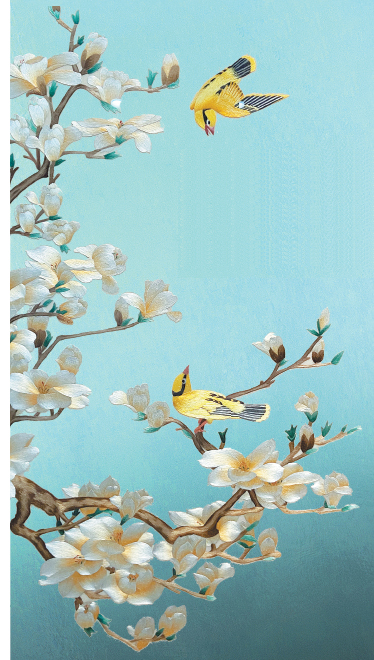Master embroiderer gives traditional craft a new lease on life
When she was 33, she was admitted to a Chaozhou embroidery research institute where she gained further expertise from an inheritor of the craft. She recalled she was also taught painting, sketching and the fundamental principles of fine arts at that time.
Riding the wave of the country's reform and opening-up, Kang quit her job and founded her own studio in the 1990s. She soon shot to fame in the industry for her prowess and innovation. Some of her embroidery works have been given to foreign leaders as national gifts.
She has since developed new methods to create double-sided embroideries, giving the traditional craftsmanship a new lease on life.
The integration of the cultural heritage into the local fashion industry is a crucial reason why the city's wedding dresses and evening gowns industry has come to prominence nationwide or even worldwide, analysts noted. This has helped Chaozhou become a trendy manufacturing hub across the two segments, they said.

Chaozhou embroidery. CHINA DAILY
Chaozhou embroidery
Originating in the Tang Dynasty (618-907), Chaozhou embroidery is a major school of Guangdong embroidery, one of the top four traditional styles of embroidery in China. The earliest Chaozhou embroidery artworks discovered in Chaozhou were decorations and buddha statues in Kaiyuan Temple built in 738. Since the Ming (1368-1644) and Qing (1644-1911) dynasties, Chaozhou embroidery works have featured in ordinary people's daily lives. They vary in themes including animals, figures and flowers and feature exquisite craftsmanship. Chaozhou embroidery has won many national awards and had a huge effect on the arts and crafts sector nationwide. It has also been widely acclaimed at home and abroad. The craft was selected as one of the first of China's national intangible cultural heritage items in 2006.



 Print
Print Mail
Mail

